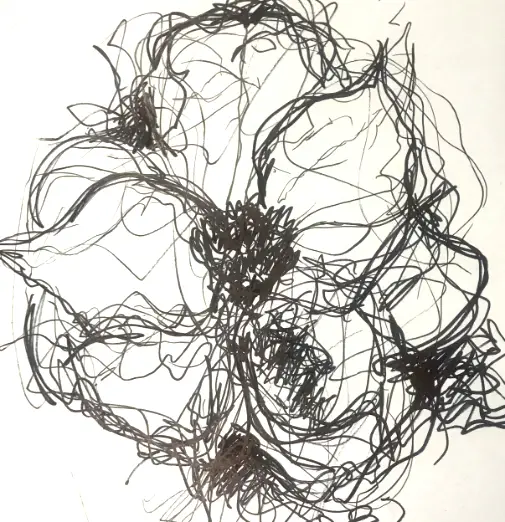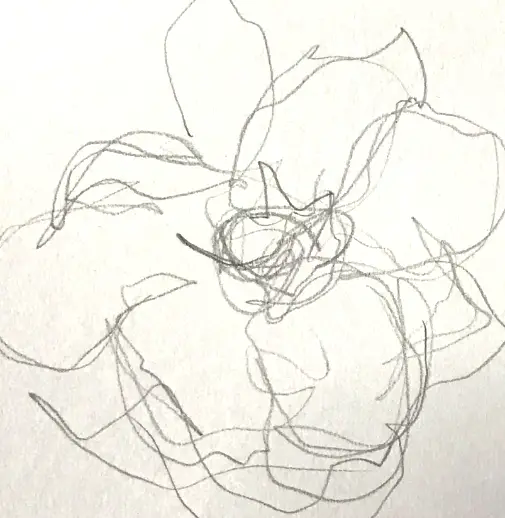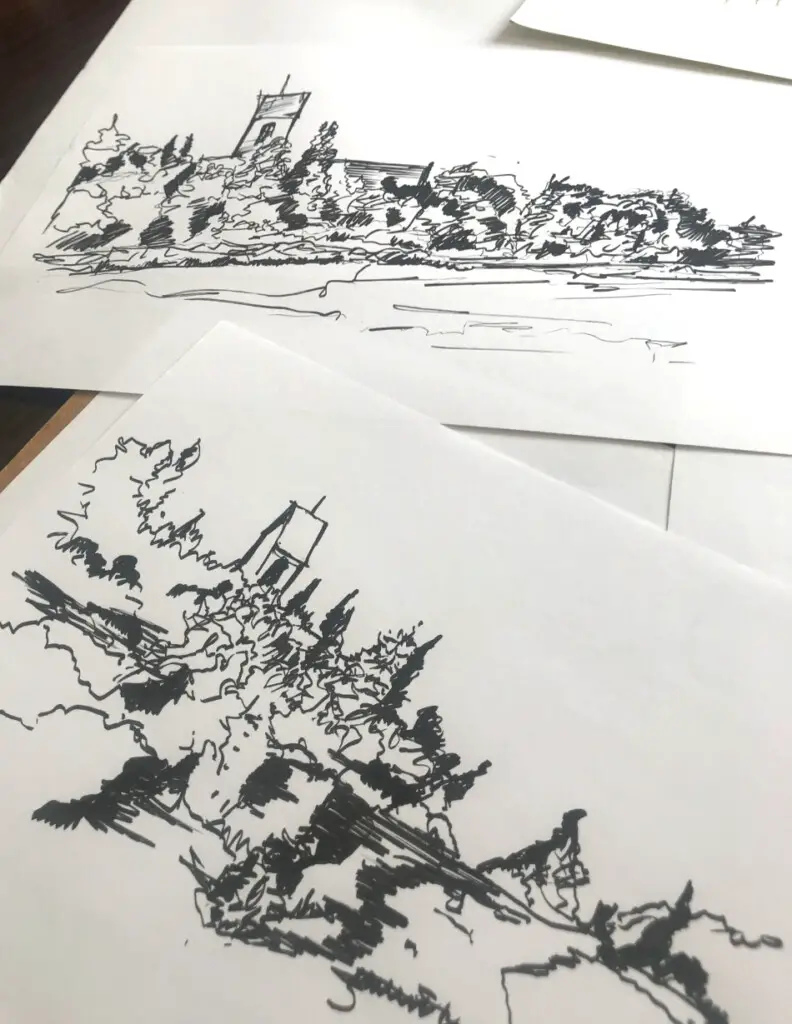What are the Advantages of Sketching Loosely?
You wouldn't believe that individual styles of drawing also allow you to draw loosely. There's an excellent reason why this style is 100% legit and should be part of your practice as much as possible. I can tell you that sketching loosely helps strengthen many aspects of your perception and eye-hand coordination. Not only that, you have less chance that you begin forming bad habits.
What kind of bad habits, you might ask? Well, first of all, you risk being exposed to the sad depths of perfectionism. This is not a good skill that any artist should adopt despite how it sounds. It's actually one of the worst bad habits you can develop early on. It's a bad habit of not tolerating mistakes that cause you to endlessly make drawings after drawing, searching for the perfect one. This guide on how to sketch loosely can help you from forming this habit.
• Not Sticking to Rigid Drawing Rules
The advantage to getting loose in your drawings all starts with easing-up on the specifics of drawing. We all learn the rules of drawing, but many of us never master them completely. The reason is from the set rules that all point to what we are taught in school. We are taught that there is no room for mistakes, and that's wrong. And this is especially so when it comes to developing a loose sense of sketching.
Forget all the rules that teachers have told you. What the establishment expects from you, and what you already think of your work. If you don't give yourself credit for being creative, you're missing the point. Being artistic should be an emotion that drives you and not one that holds you back. For this very reason, there's nothing wrong with letting-up on the rules that you apply to sketch anything.
• Allow Yourself to Make Mistakes
I know it sounds like something you hear from those happy-go-lucky videos you see online showing how you can be a better person. The truth is that life is already filled with enough limitations that don't allow you mistakes. But that's where doing art is all about interpretation, and sketching plays a big part in that. It's the first step to getting your ideas on paper. It's essentially the bread and butter of the creative process.
Allow mistakes to happen, they're not going to hurt anyone, especially your feelings. Just don't stick to rigid thinking and relax a bit. Just like the song says, “Don't worry, be happy,” or in this case, whatever helps you relax. Put less effort into making your hand do precisely as you want. Just like you would jog instead of sprinting, you're still doing the same thing, just a bit slower and smoother than usual.
• Loosen Up Your Hand Movements
You are continually using your visual senses to coordinate with your hands. This is something that we learn as young children and further develop through drawing pictures. As you begin to take more art classes and practice a lot, you get better at sketching and drawing. But the conversation that starts in your head and goes to your hand is only telling you one thing. You should know that your hand is being carefully controlled.
To loosen up your touch is all a matter of muscle control. This is what allows you to make light or dark lines on your paper. Using this control, you can begin a slow process to not be so precise with drawing lines. Let your movements become more flowing and less pronounced. In other words, don't hold your breath on every line you draw. Let each line be more like an exhale that isn't forced.
How to Create a Loose Sketch
The first thing that you want to do is have your sketching paper and drawing utensil handy. Take the time to visualize what you want to draw, and then take a nice deep breath. Being relaxed and somewhat laid-back will help, so try stretching will help get you ready. You don't want to feel tense, and this only adds to your drawings looking stiff as a result. Just like stretching before a workout, sketching should follow a similar path.
Make your first strokes that take on the outlines of the object you want to draw. They don't need to be overly deep or dark, just light flowing strokes that follow basic lines and curves. These can be long flowing lines or short scratches, just as long as you aren't getting into too much detail. Once you've gotten the primary lines down, you can follow up with quick detail that includes shadows and minor details.
How to Sketch Loosely on Location?
The one thing that I have to say about making any kind of sketch on location is to bring sunglasses. These give you a good layer of eye protection from the sun and allow you to concentrate on white sketching paper. Drawing outdoors makes the continual looking back and forth motion less annoying because of the snow blinding effect. This also makes it easier to make a faster picture possible since you can see what you're drawing more clearly.
This technique also works using any color that you bring along since the glare is reduced. There will be times that you have to double-check your color selection, and squinting your eyes helps when lifting your sunglasses. If you can sit down or sit in a relaxing field chair, you should bring an essential addition. I recommend a travel camping chair since they're portable and very comfortable. They also fit into a backpack quickly enough. Click Here to view it on Amazon.
How to Sketch Loosley with a Pencil
Using a pencil is great sketching, too, since it can be erased several times to get your lines just right. But when it comes to sketching loosely, you need to follow some of these rules. These will also help improve your sketching skills as you reduce the tendency to draw all the time correctly. These are all great tips to master and don't hurt to use for practice sketching either. Each one of these tips is worth its weight in gold, so practice all of them.
• Don't Use Your Fingers But More of Your Hand
It's common to be more precise by using your fingers to control your pencil. You can get perfect lines every time, but this is actually impractical for sketching loosely. These lines take longer and are going to take up three to four times longer. You need to speed this up by using hand movements that are directly connected to your arm. Even quick movements from your wrist are better than using your fingers.
• Don't Erase and Redraw Lines
Another useless activity is going back and erasing anything that you don't need to do at that very moment. This is why you can go back later and clean it up at your leisure. Why do you want to make corrections in the middle of a field or when you're on location? Leave these items in your box of supplies, but don't make them part of sketching loosely. The less you rely on fixing intersecting lines, the better.
• Feel Free to Overlap Your Lines
If you're going to be drawing items with angles and box-like shapes, these will all have overlapping lines. They don't have to be 100% perfect. They are supposed to look rough and sketched in. They can always be corrected later when you go back and refine your lines. But that's not what you do with blocking out the basic lines. Think of this process as hammering out the basic structure to fix it later when you have more time.
• Zigzag Lines for Faster Sketching Skill
How fast can you draw a light line with a pencil that starts to form a more delicate line in between your wrist strokes? Imagine that you can do an entire sketch like this in a few minutes that is roughed out using short zigzag-looking lines. The same thing can be done by making concentric circles. It's how animators make their characters and is a faster way to block out a shape. Actually, it's way faster than drawing with your fingers.
• Dial-in Your Sharper Lines
Of course, making zigzag lines and any sketched-in line quickly needs to have an eventual focus. This is where you need to have enough control with your hand, so the right amount of pressure is put down on the final strokes. Using a lighting fast technique forming repeated sketching lines have a distinct look to it. This makes it easier to see where your final defining line fits in best, like pulling focus in a camera that's really your sketch paper.
How To Sketch Loosely With a Pen
Now using a pen is a different kind of tool that can make sketching go pretty quick. Unlike a pencil, it cannot be erased, so you have to deal with what you have. But the same techniques that will apply to a pencil don't always apply to a pen. Usually, for any pen sketch, these are for really rough gauged ideas for scenes used for reference only. You would typically go back and re-sketch the same thing in pencil to get a better final drawing.
•Use a Fine Liner Pen
Go as Fineline that your pen can be, as you're comfortable using. I'll always enjoy using a very cheap alcohol pen that's in any stationery store. These have pretty fair tips and work great on sketching paper. They don't bleed everywhere, and the line stays nice and thin. Don't buy an expensive pen that is going to set you back way too much. Just find a decent alcohol pen that is affordable on any budget. Click Here to view fine liners on Amazon.
• Make Purposeful Lines
Now, this takes a little bit of explaining, so this makes more sense. You are still using your hand but leaning less on using your fingers. All the lines are somewhat connected, so you need control without losing control. Imagine how a puzzle piece connects to another. They all have a connection point. This means you connect details to other details and work down to the next detail that connects. Often these drawings look a bit squiggly when viewed up close.
• Avoid Zigzags
This looks terrible while drawing a loose pen drawing. This is only rewarding when you use a pencil and clean it up later. With a pen, it will look childish and frantic. Instead, the details are dealt with using fragmented squiggles that form detail. Since you can't go back and make your lines lighter, you do need to have a sense of looking for contrast. This is the light and dark of an object and how it appears when a shadow is applied to that surface.
If you can capture the essence of drawing contrast into your drawing, this adds to the illusion. Loosely sketching in pen does have similarities to pencil, but the technique is slightly different. You might say that sketching loosely in pen is more advanced, but it's not. It uses more focus on contrast and connective detail. The rest is up to how you lay down these details on your paper.
Final Word
Don't be afraid to experiment and start improving your drawing skills today. Getting loose is going to make you a better artist that will be happier as a result. If you constrict yourself to rigid rules all the time, eventually, you go nuts. That's not very healthy to do, especially these days. Make a better step away from perfectionism and lean more into getting loose with your drawing skills.
You'll also see how much faster you can make sketches on the go and save yourself more time in the end. As you expand more with materials, you can get more expressive in your technique, drawing loosely with a pen. Now that you're ready to practice how to sketch loosely, you won't be shy by this point.





